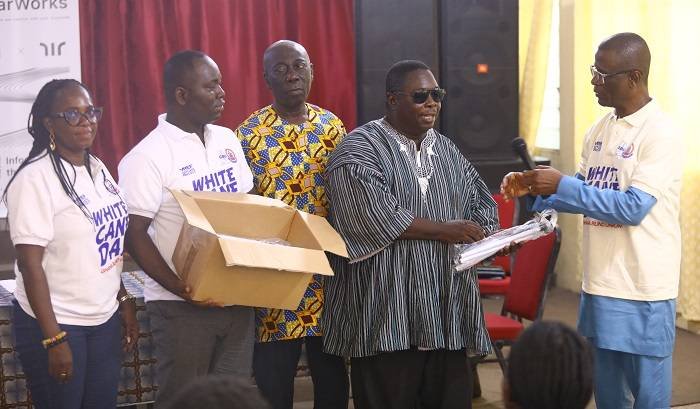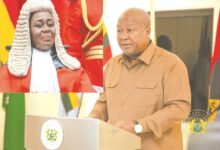
About 493,000 (40 per cent) of Ghana’s visually-impaired population do not own a white cane thereby inhibiting their mobility and social inclusion.
Statistics from the 2021 Census report indicates that 1.2 million out of the 30.8 million population have varying degrees of visual impairment from total blindness to slight visual impairment.
Marking this year’s International White Cane Day in Accra yesterday, the Executive Director of the Ghana Blind Union (GBU), Dr Peter Obeng-Asamoa, said the percentage of visually challenged persons without the white cane posed a risk to society and was important that they were supported to own one.
“A large percentage of our members requires the basic necessity of a white cane but due to weak financial situations, many of them are unable to afford it. If we as a nation are looking into a holistic future of our country, it is imperative that we do not leave these chunk of our citizenry behind.
With the requisite social environment, visually impaired persons are ready and can contribute to their own development as well as that of the community and ultimately, the nation,” he noted.
Dr Obeng-Asamoa reiterated that blind persons “do not require sympathy but opportunities” to lead meaningful lives and it was high time efforts are strengthened to eliminate all forms of barriers that hamper the total inclusion of blind and partially sighted persons in the society.
“It is important that the entire social collective works conscientiously to remove all social, physical and economic barriers that may work against the total inclusion of blind and partially sighted persons,” he urged.
Professor Enoch Sam, a lecturer at the University of Education Winneba (UEW), mentioned some projects the institution was undertaking to promote the total inclusion of persons with disability in society.
One of the initiatives, he said was working with the Ghana Private Road Transport Union (GPRTU) and other stakeholders to educate and enforce the rights of physically challenged persons to have two seats allocated to them in public transports.
“As part of this, push bells would be installed in vehicles to aid physically challenged people to communicate with drivers anytime they are on board.”
Others, he said, were the placement of destination stickers on public transport to aid the hearing impaired to easily identify their destination.
A lecturer at UEW, Dr Hayford Kweku Samuel, encouraged visually impaired persons to always have their white canes in hand saying; “the refusal to use the white cane is like enslaving yourself as a physically challenged person,” he said.
As part of the celebration, lecturers from the university donated 25 pieces of white canes and an undisclosed amount of money to the GBU.
Also, a new technology introduced by Haptic Nav to enable blind people to navigate their way, as a supplement to the white cane was outdoored.
BY ABIGAIL ANNOH







